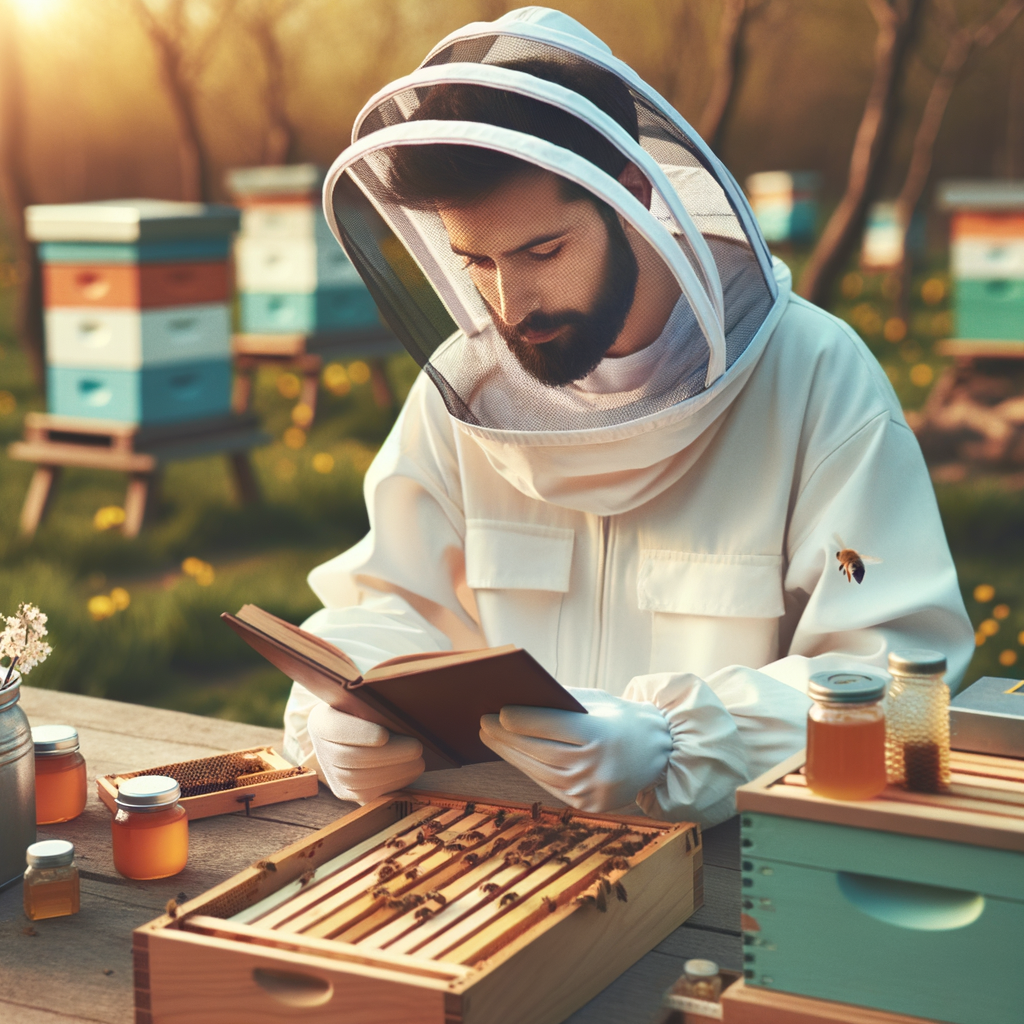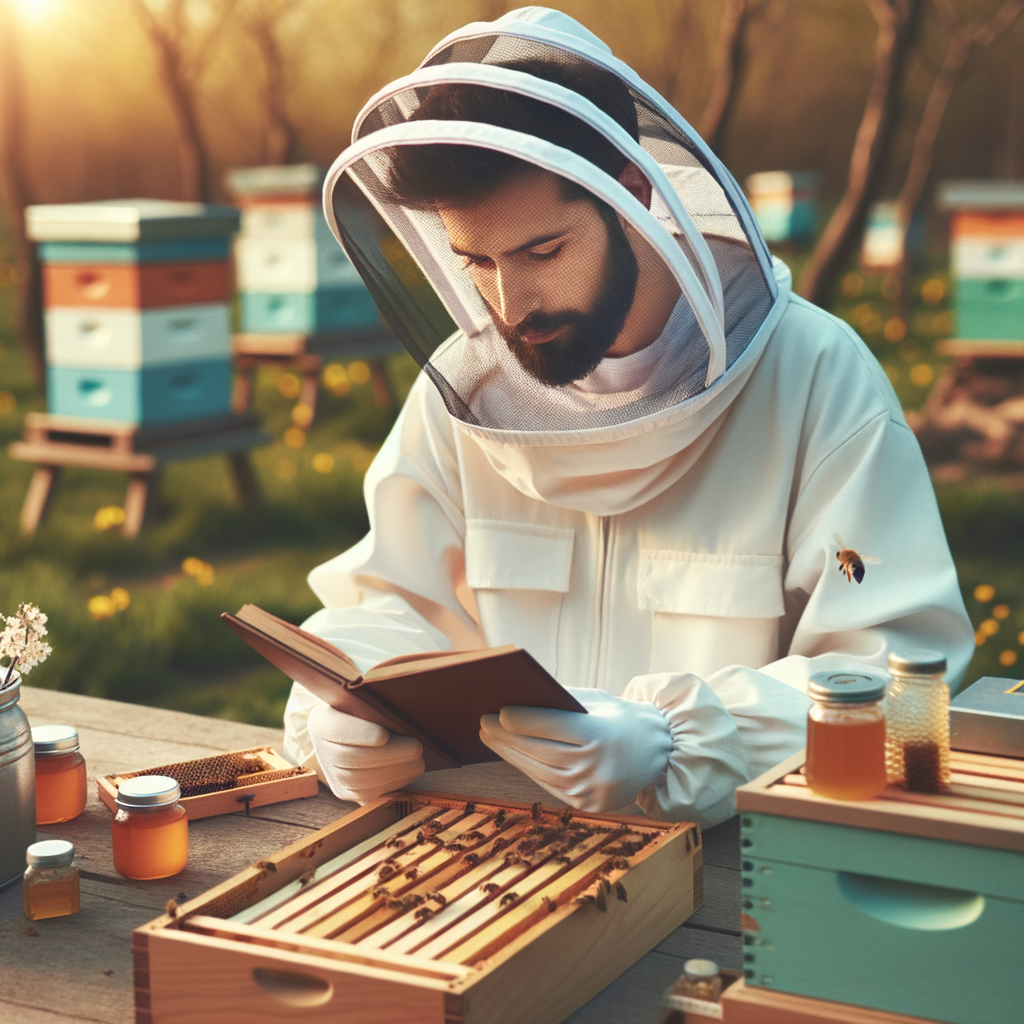
Introduction to Beekeeping for Beginners
Welcome to the fascinating world of beekeeping! This introductory guide aims to provide beginners with the essential knowledge needed to start their journey into beekeeping. We will cover the basics of beekeeping, explore its benefits, and identify the best season for beekeeping.
-
- Understanding the Basics of Beekeeping
Beekeeping, also known as apiculture, is the practice of maintaining bee colonies, usually in man-made hives. The bees are kept for their honey and other products like beeswax, propolis, and royal jelly. Beekeeping also plays a crucial role in pollinating flowers, which is vital for our ecosystem.
As a beginner, you need to understand the life cycle of bees, the structure of the hive, and the roles of different bees in a colony. The queen bee, worker bees, and drones each have unique responsibilities that contribute to the functioning of the hive.
-
- Exploring the Benefits of Beekeeping
Beekeeping is not just about honey production; it offers numerous benefits. It contributes to the environment by aiding in pollination, which is essential for plant reproduction. Beekeeping can also be a rewarding hobby or a profitable business. It can help you connect with nature, reduce stress, and learn about the fascinating world of bees.
From a financial perspective, products from beekeeping such as honey, beeswax, and propolis are in high demand. Thus, beekeeping can be a source of income or even a full-time business.
-
- Identifying the Best Season for Beekeeping
The best time to start beekeeping varies depending on your location. Generally, spring is the ideal season to start as this is when flowers start to bloom, providing bees with plenty of nectar and pollen. Starting in spring gives the bees enough time to build a strong colony before winter.
However, it’s important to note that successful beekeeping requires year-round attention. Each season brings different tasks for the beekeeper, from hive inspections in the spring and summer to preparing the bees for winter during the fall.
Beekeeping is a rewarding practice that requires understanding, commitment, and a love for nature. As you embark on this journey, remember that every beekeeper started as a beginner. With time, patience, and experience, you too can become a successful beekeeper.
Starting a Beekeeping Business
Starting a beekeeping business can be a rewarding endeavor. Not only does it offer the joy of producing your own honey, but it also supports pollinators, which are essential for our environment. Plus, it can potentially offer financial rewards. However, like any business, it requires careful planning and strategy.
Business Plan and Strategy
- Setting clear business objectives: Define what you want to achieve with your beekeeping business. This could be producing a certain amount of honey, selling bee-related products, or even offering beekeeping classes.
- Identifying your target market: Understand who your potential customers are. Are they local residents, restaurants, or health food stores? Knowing your target market will help guide your marketing efforts.
- Developing a marketing strategy: Once you know your target market, develop a plan to reach them. This could involve social media, local advertising, or word-of-mouth.
- Understanding local regulations and permits: Before you start your beekeeping business, make sure you understand any local regulations or permits that may be required.
- Insurance considerations for beekeepers: Beekeeping can have certain risks, so it’s important to consider insurance. This can protect you in case of accidents or damage to your hives.
Once you’ve laid the groundwork for your business, it’s time to consider the practical aspects of beekeeping. This involves understanding the lifecycle of bees and how to manage your hives throughout the year.
- Spring: The season of growth: This is when your bees will start to multiply and your queen will be laying eggs. It’s a busy time for beekeepers, as you’ll need to ensure your hives have enough space for the growing colony.
- Summer: The season of honey flow: This is when your bees will be collecting nectar and making honey. It’s a rewarding time, but also a time to watch for pests and diseases.
- Fall: The season of preparation: As the weather cools, your bees will start to prepare for winter. You’ll need to ensure they have enough food and that your hives are well-insulated.
- Winter: The season of rest: Your bees will be less active during the winter, but you’ll still need to monitor your hives and ensure they’re protected from the cold.
Regular inspection and maintenance of your hives is crucial, as is managing pests and diseases. You’ll also need to ensure a diverse food source for your bees and place your hives in the optimal location for honey production.
- Regular inspection and maintenance: Regularly check your hives for any signs of disease or pests, and carry out any necessary maintenance.
- Managing pests and diseases: Bees can be affected by a range of pests and diseases. Learn how to identify and treat these to keep your bees healthy.
- Ensuring a diverse food source for bees: Bees need a range of nectar and pollen sources. Plant a variety of flowering plants, or place your hives near diverse natural vegetation.
- Proper hive placement for optimal honey production: Hives should be placed in a sunny location, away from wind and damp. They should also be easily accessible for you to manage.
Finally, you’ll need to set up your beehive and introduce your bees to their new home. This involves choosing the right location, setting up the beehive, and carefully introducing the bees. You’ll also need certain equipment, such as a bee suit, smoker, and hive tool.
- Beehive: The home of your bees: Your beehive is where your bees will live and produce honey. It needs to be sturdy, well-insulated, and easy for you to manage.
- Bee suit: Essential for protection: A bee suit will protect you from bee stings when you’re managing your hives. It’s an essential piece of equipment for every beekeeper.
- Smoker: Calms bees for easy handling: A smoker can help to calm your bees when you’re inspecting your hives, making it easier and safer for you to manage them.
- Hive tool: For hive inspection and maintenance: A hive tool is used to open your hives and carry out inspections and maintenance. It’s a simple but essential tool for every beekeeper.
- Choosing the right location: Choose a location for your hives that is sunny, sheltered, and easily accessible. This will help your bees to thrive and make it easier for you to manage your hives.
- Setting up the beehive: Once you’ve chosen a location, you’ll need to set up your beehive. This involves assembling the hive, adding frames, and preparing it for your bees.
- Introducing bees to their new home: Introducing your bees to their new home is a delicate process. You’ll need to release them into the hive and then monitor them to ensure they’re settling in.
Starting a beekeeping business can be a rewarding endeavor, offering the joy of producing your own honey, the environmental benefits of supporting pollinators, and the potential financial rewards of a successful business. With careful planning and strategy, you can create a thriving beekeeping business.








